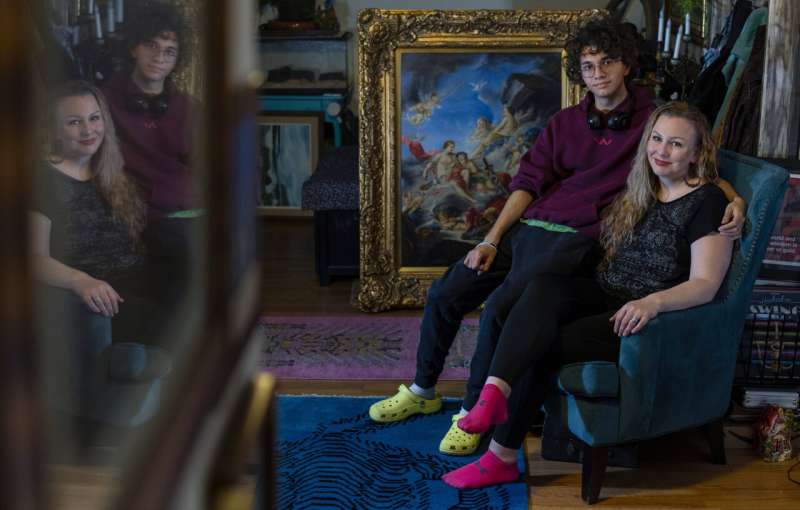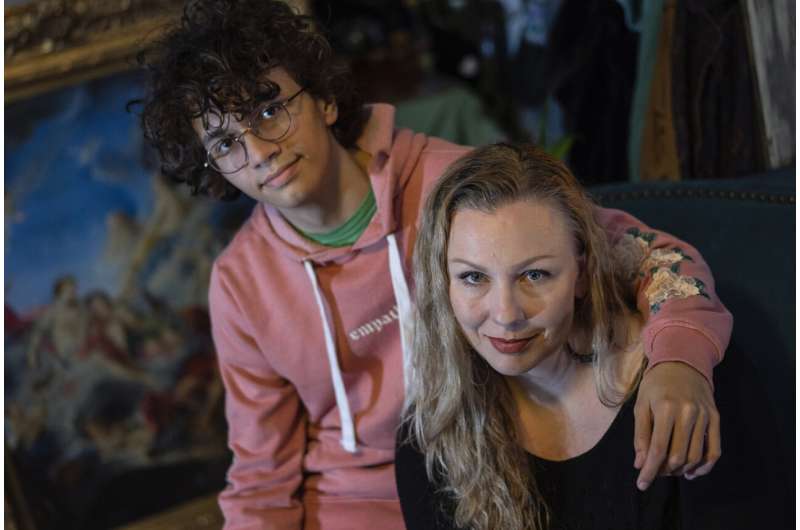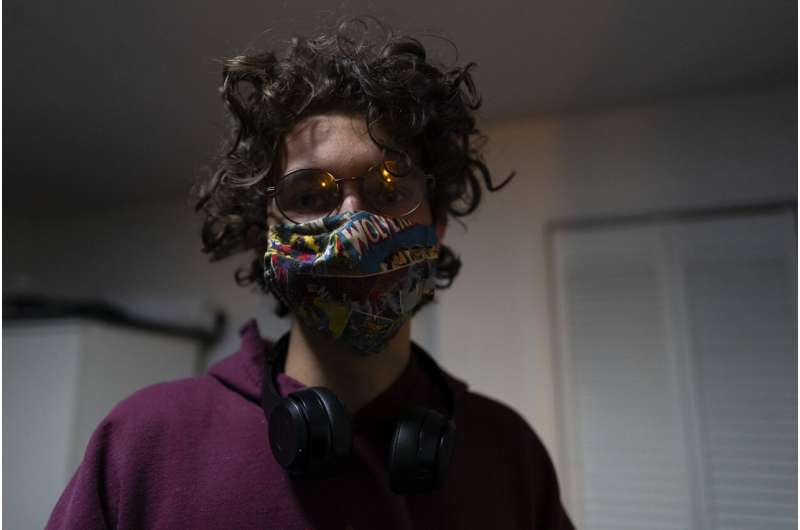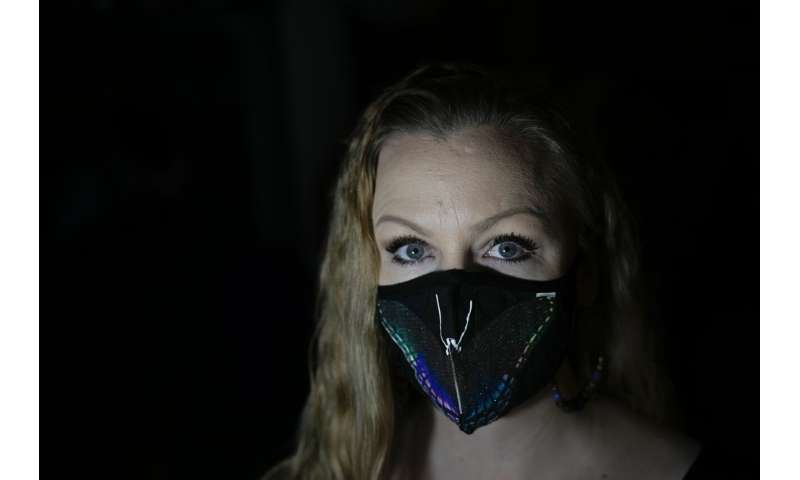A year after omicron began its assault on humanity, the ever-morphing coronavirus mutant drove COVID-19 case counts higher in many places just as Americans gathered for Thanksgiving. It was a prelude to a wave that experts expect to soon wash over the U.S.
Phoenix-area emergency physician Dr. Nicholas Vasquez said his hospital admitted a growing number of chronically ill people and nursing home residents with severe COVID-19 this month.
"It's been quite a while since we needed to have COVID wards," he said. "It's making a clear comeback."
Nationally, new COVID cases averaged around 39,300 a day as of Tuesday—far lower than last winter but a vast undercount because of reduced testing and reporting. About 28,000 people with COVID were hospitalized daily and about 340 died.
Cases and deaths were up from two weeks earlier. Yet a fifth of the U.S. population hasn't been vaccinated, most Americans haven't gotten the latest boosters and many have stopped wearing masks.
Meanwhile, the virus keeps finding ways to avoid defeat.
The omicron variant arrived in the U.S. just after Thanksgiving last year and caused the pandemic's biggest wave of cases. Since then, it has spawned a large extended family of sub-variants, such as those most common in the U.S. now: BQ.1, BQ.1.1 and BA.5. They edged out competitors by getting better at evading immunity from vaccines and previous illness—and sickening millions.

Carey Johnson and her son Fabian Swain are photographed in their Germantown, Md., home on Monday, Nov. 14, 2022. Both Carey and Fabian have recovered from COVID. Credit: AP Photo/Carolyn Kaster
Carey Johnson's family got hit twice. She came down with COVID-19 in January during the first omicron wave, suffering flu-like symptoms and terrible pain that kept her down for a week. Her son Fabian Swain, 16, suffered much milder symptoms in September when the BA.5 variant was dominant.
Fabian recovered quickly, but Johnson had a headache for weeks. Other problems lingered longer.
"I was like, 'I cannot get it together.' I could not get my thoughts together. I couldn't get my energy together" said Johnson, 42, of Germantown, Maryland. "And it went on for months like that."
HOT SPOTS EMERGE
Some communities are being particularly hard hit right now. Tracking by the Mayo Clinic shows cases trending up in states such as Florida, Arizona, Colorado and New Mexico.
In Arizona's Navajo County, the average daily case rate is more than double the state average. Dr. James McAuley said 25 to 50 people a day are testing positive for the coronavirus at the Indian Health Service facility where he works. Before, they saw just a few cases daily.

Carey Johnson and her son Fabian Swain are photographed in their Germantown, Md., home on Monday, Nov. 14, 2022. Both Carey and Fabian have recovered from COVID. Credit: AP Photo/Carolyn Kaster
McAuley, clinical director of the Whiteriver Indian Hospital, which serves the White Mountain Apache Tribe, said they are "essentially back to where we were with our last big peak" in February.
COVID-19 is part of a triple threat that also includes flu and the virus known as RSV.
Dr. Vincent Hsu, who oversees infection control for AdventHealth, said the system's pediatric hospital in Orlando is nearly full with kids sickened by these viruses. Dr. Greg Martin, past president of the Society of Critical Care Medicine, sees a similar trend elsewhere.
Pediatric hospitals' emergency departments and urgent care clinics are busier than ever, said Martin, who practices mostly at Grady Memorial Hospital in Atlanta. "This is a record compared to any month, any week, any day in the past," he said.
Looking to the future, experts see the seeds of a widespread U.S. wave. They point to what's happening internationally—a BA.5 surge in Japan, a combination of variants pushing up cases in South Korea, the start of a new wave in Norway.

Fabian Swain stands in the entryway in his Germantown, Md., home, Monday, Nov. 14, 2022. Fabian and his mother, Carey Johnson, have recovered from COVID. Credit: AP Photo/Carolyn Kaster
Some experts said a U.S. wave could begin during the holidays as people gather indoors. Trevor Bedford, a biologist and genetics expert at the Fred Hutchinson Cancer Research Center, said it could peak at around 150,000 new cases a day, about what the nation saw in July.
A new wave would be rough, said Dr. Mark Griffiths, medical director of the emergency department of Children's Health Care of Atlanta-Spalding Hospital. "So many systems are on the brink of just being totally overburdened that if we get another COVID surge on top of this, it's going to make some systems crack."
One bright spot? Deaths are likely to be much lower than earlier in the pandemic. About 1 in 2,000 infections lead to death now, compared with about 1 in 200 in the first half of 2020, Bedford said.
OMICRON'S YEARLONG REIGN
The same widespread immunity that reduced deaths also pushed the coronavirus to mutate. By the end of last year, many people had gotten infected, vaccinated or both. That "created the initial niche for omicron to spread," Bedford said, since the virus had significantly evolved in its ability to escape existing immunity.

Fabian Swain wears a Wolverine face mask in his Germantown, Md., home, Monday, Nov. 14, 2022. Fabian and his mother, Carey Johnson, have recovered from COVID. Credit: AP Photo/Carolyn Kaster
Omicron thrived. Mara Aspinall, who teaches biomedical diagnostics at Arizona State University, noted that the first omicron strain represented 7.5% of circulating variants by mid-December and 80% just two weeks later. U.S. cases at one point soared to a million a day. Omicron generally caused less severe disease than previous variants, but hospitalizations and deaths shot up given the sheer numbers of infected people.
The giant wave ebbed by mid-April. The virus mutated quickly into a series of sub-variants adept at evading immunity. A recent study in the journal Science Immunology says this ability to escape antibodies is due to more than 30 changes in the spike protein studding the surface of the virus.
Omicron evolved so much in a year, Bedford said, it's now "a meaningless term."
That rapid mutation is likely to continue.
"There's much more pressure for the virus to diversify," said Shishi Luo, head of infectious diseases for Helix, a company that supplies viral sequencing information to the U.S. Centers for Disease Control and Prevention.

Carey Johnson wears a butterfly face mask in her Germantown, Md., home on Wednesday, Nov. 16, 2022. Carey and her son Fabian Swain have recovered from COVID. Credit: AP Photo/Carolyn Kaster
Doctors said the best protection against the bubbling stew of sub-variants remains vaccination. And officials said Americans who got the new combination booster targeting omicron and the original coronavirus are currently better protected than others against symptomatic infection.
Dr. Peter Hotez, co-director of the Center for Vaccine Development at Texas Children's Hospital, said getting the booster, if you're eligible, is "the most impactful thing you could do."
Doctors also urge people to continue testing, keep up preventive measures such as masking in crowds, and stay home when sick.
"COVID is still a very significant threat, especially to the most vulnerable," said Dr. Laolu Fayanju of Oak Street Health in Cleveland, which specializes in caring for older adults. "People have to continue to think about one another. We're not completely out of the woods on this yet."
© 2022 The Associated Press. All rights reserved. This material may not be published, broadcast, rewritten or redistributed without permission.
- flash13 and Karlston
-

 2
2



Recommended Comments
There are no comments to display.
Join the conversation
You can post now and register later. If you have an account, sign in now to post with your account.
Note: Your post will require moderator approval before it will be visible.